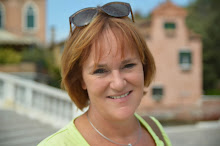What do you need?
- construction paper in dark blue, yellow and black
- paperclips
- scissors
- cutting knife
- cutting blade
- glue
What should you do?
Draw the skyline of a street on the black paper. Add a tree if you want to, or draw a Pete near the chimney.
Put the black sheet on the yellow one and attach them to each other with four paperclips. Cut out the skyline; you'll cut two sheets at the same time. When ready, remove the paperclips and cut some windows out of the black sheet.
Cut a moon out of the rest of the yellow sheet.
Stick the black and yellow skyline together and slide the black sheet one millimeter so you see the yellow edges.
Look to the position of the moon: the yellow edges are there where the moon shines.
Stick the moon on the blue sheet and stick the skyline below.










.jpg)


.jpg)
.jpg)










.jpg)

.jpg)










.jpg)
.jpg)
.jpg)













